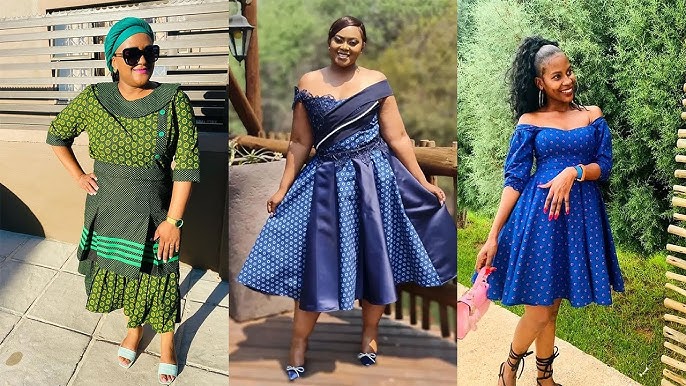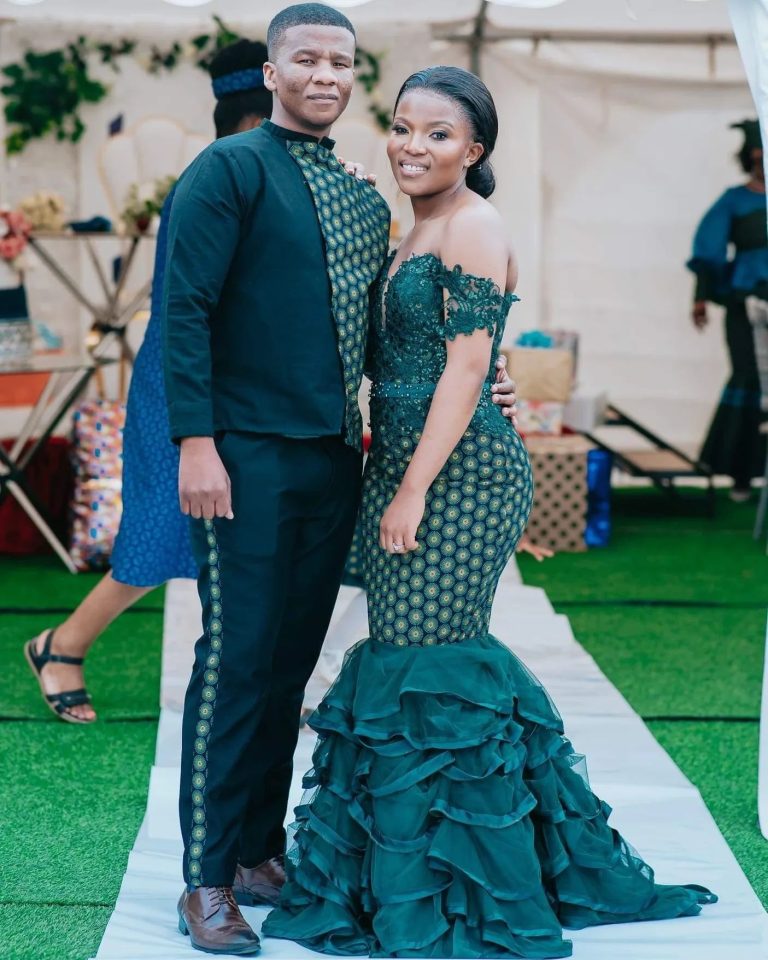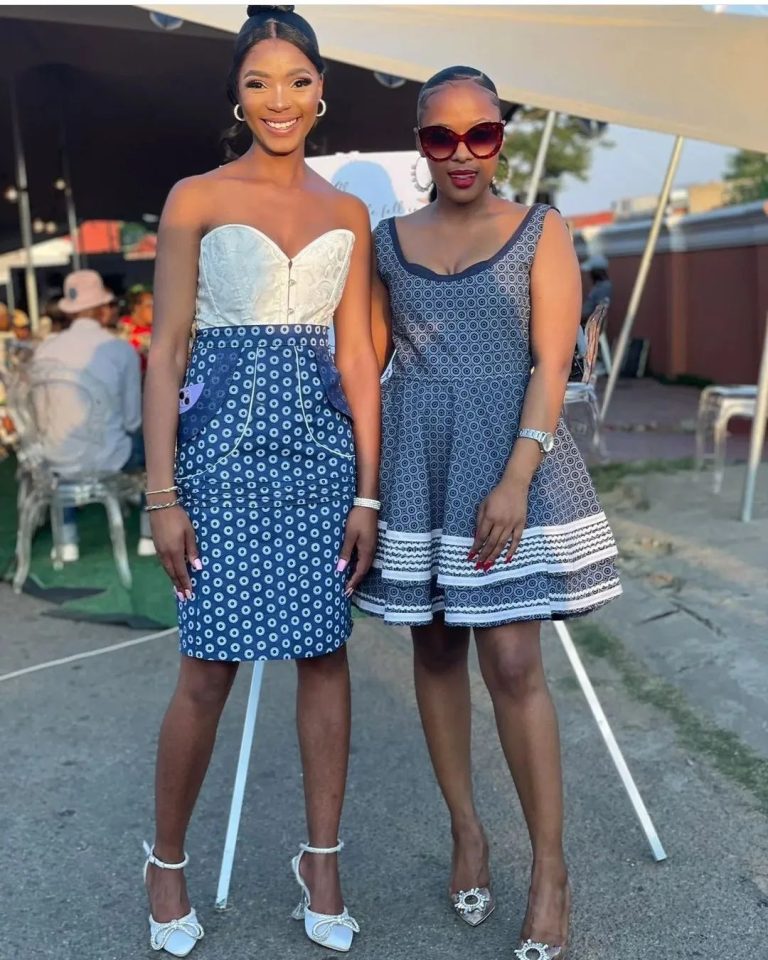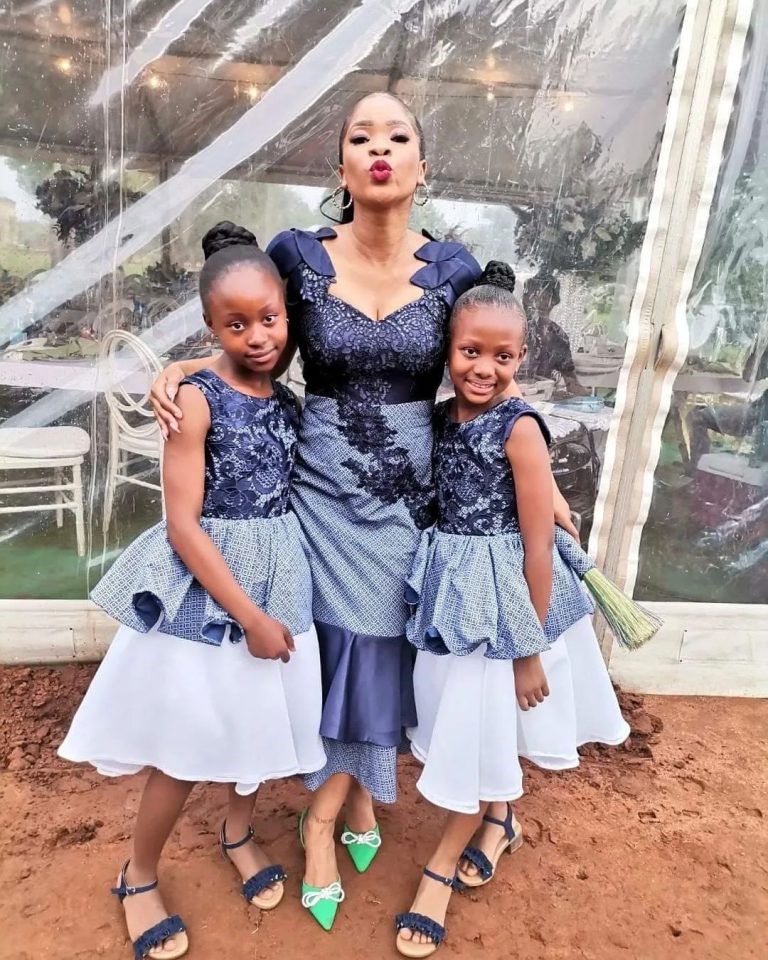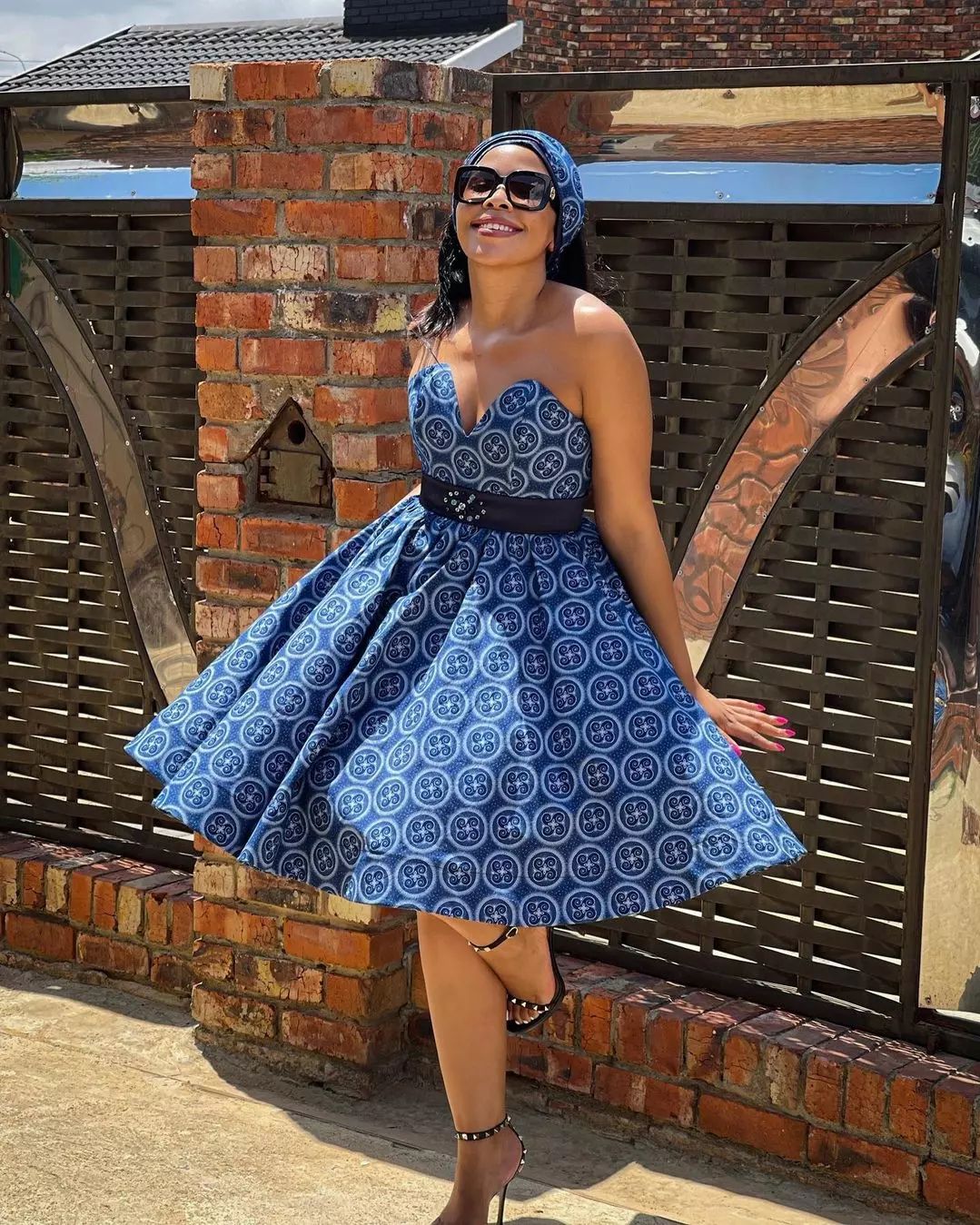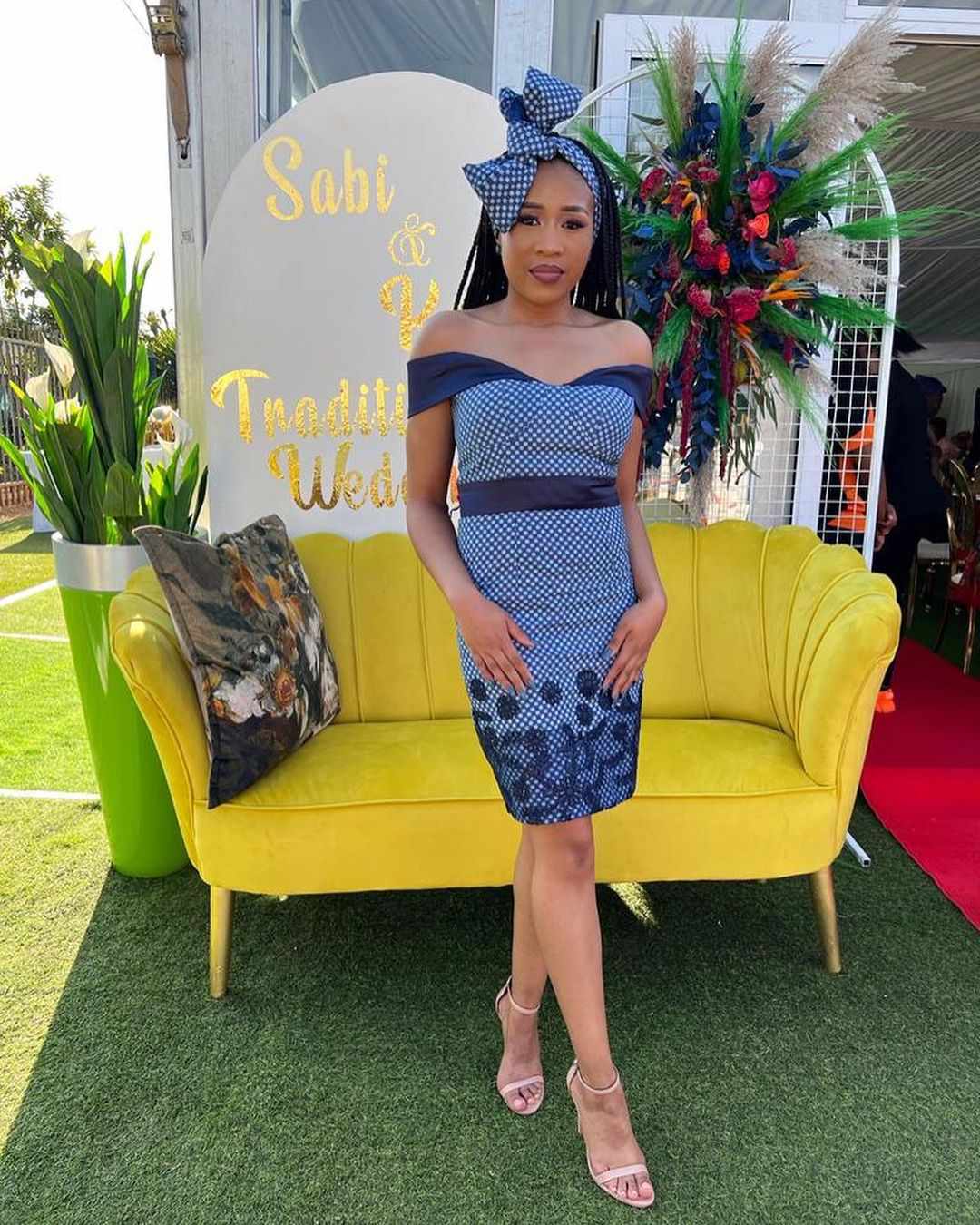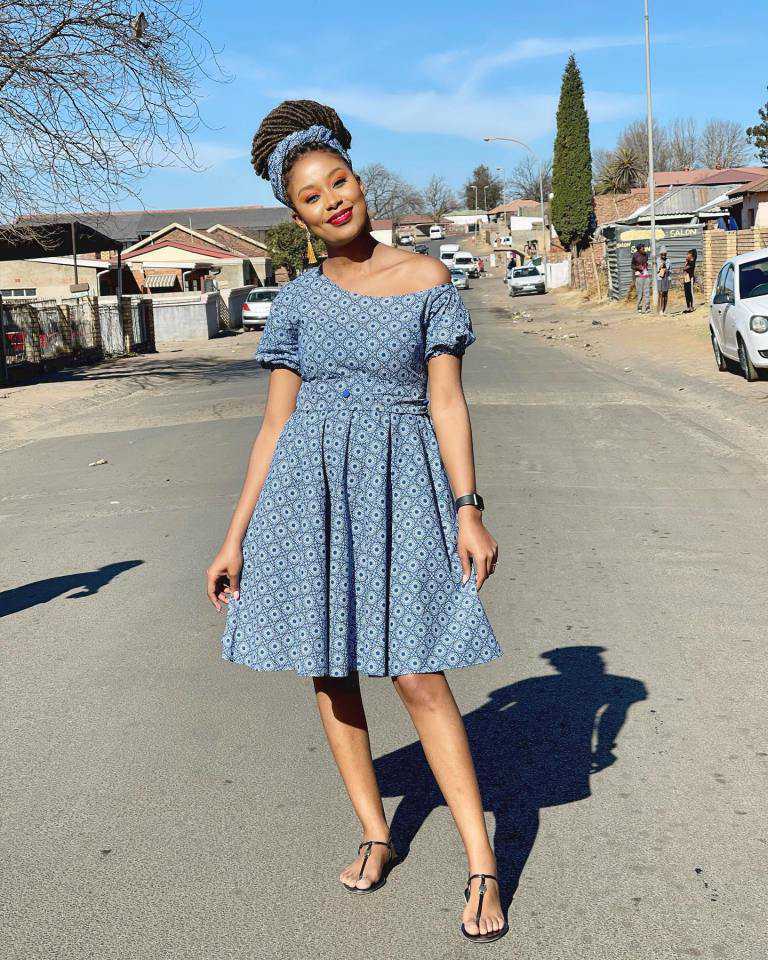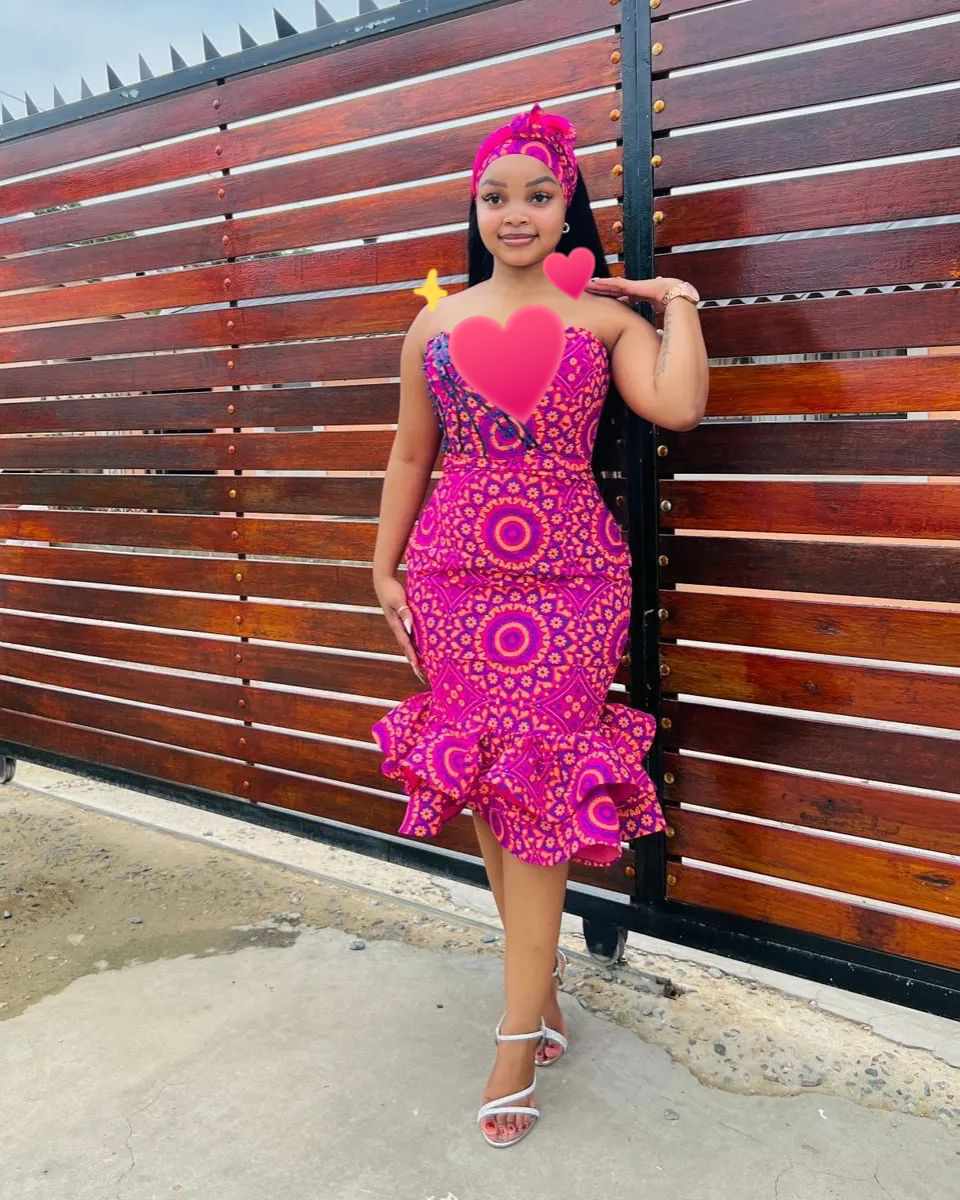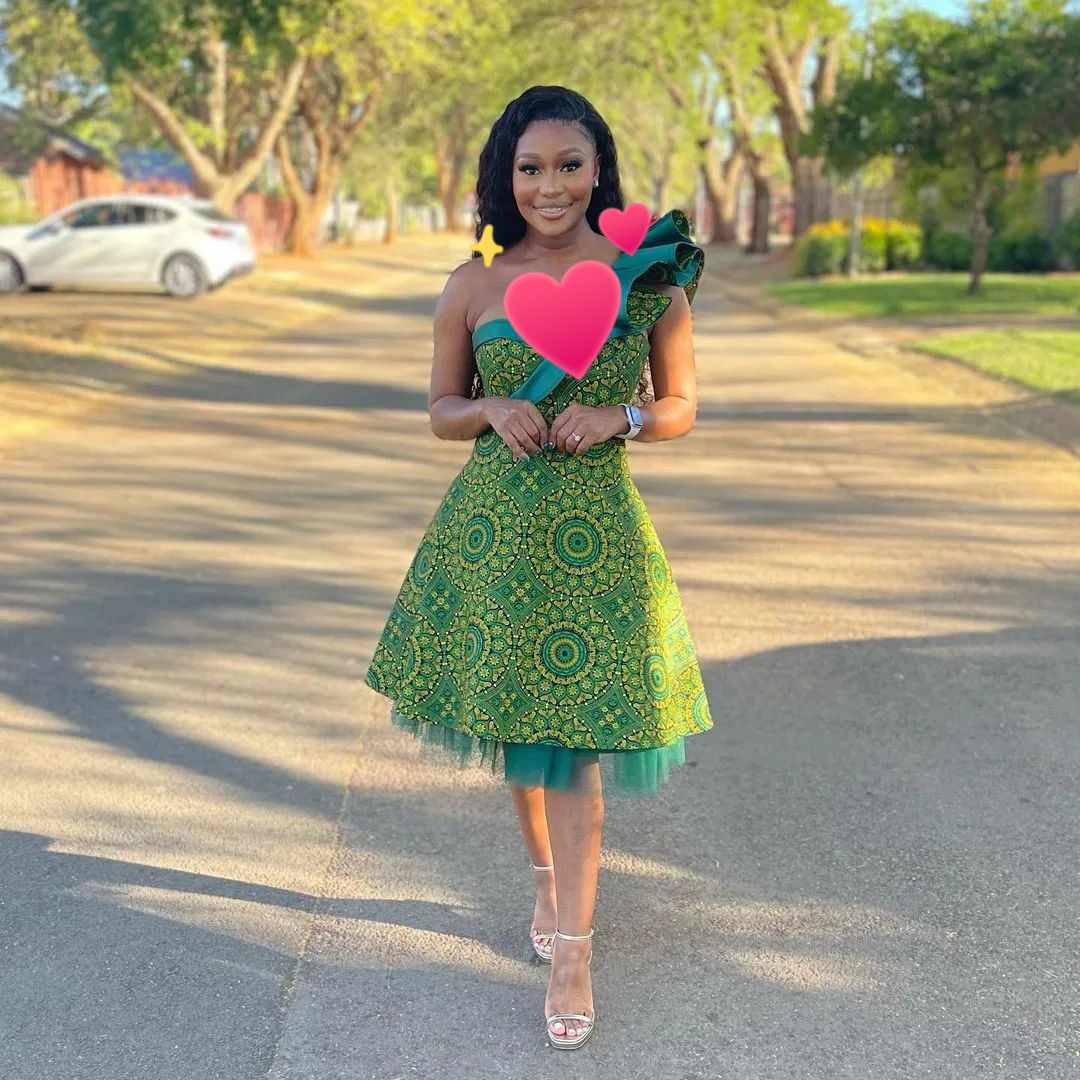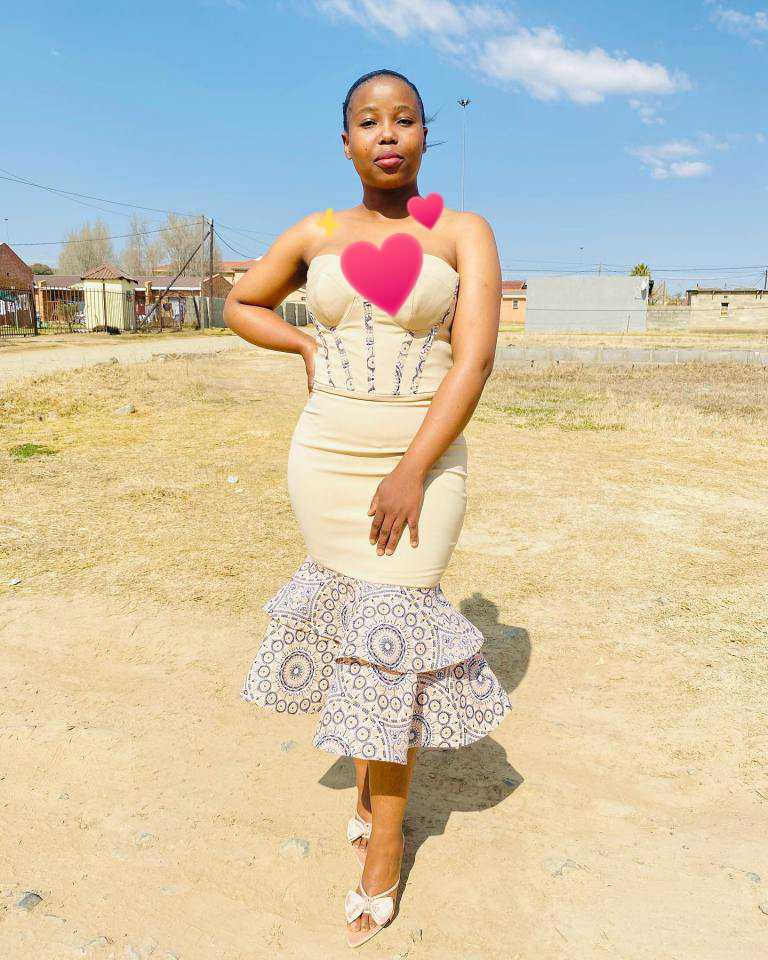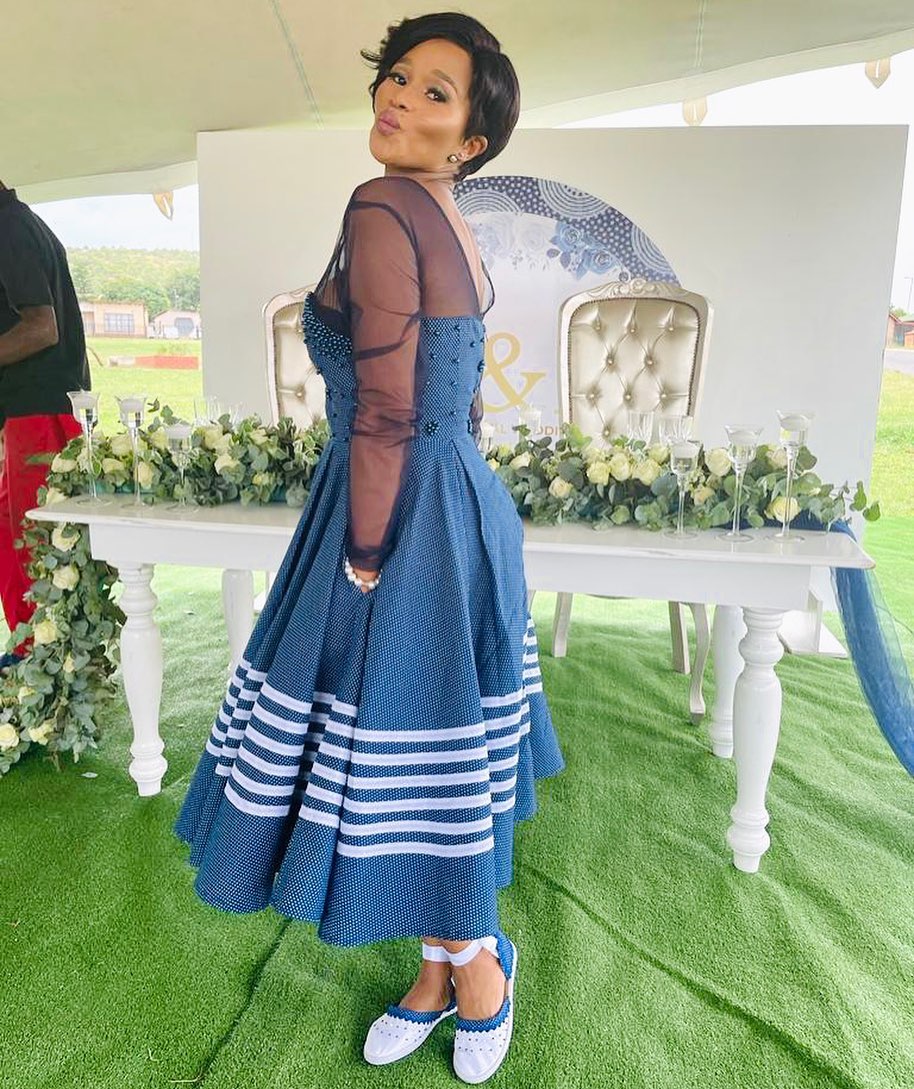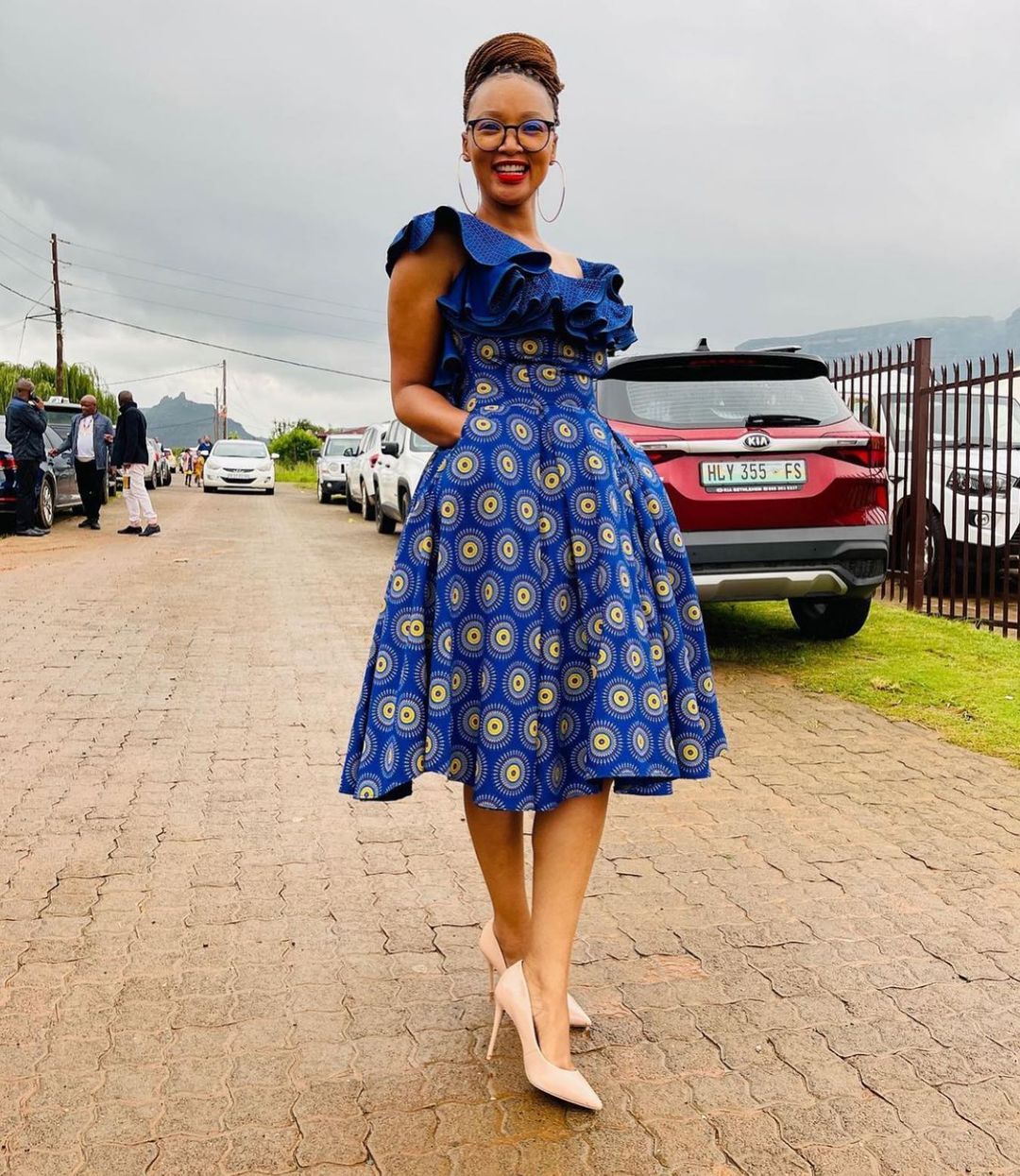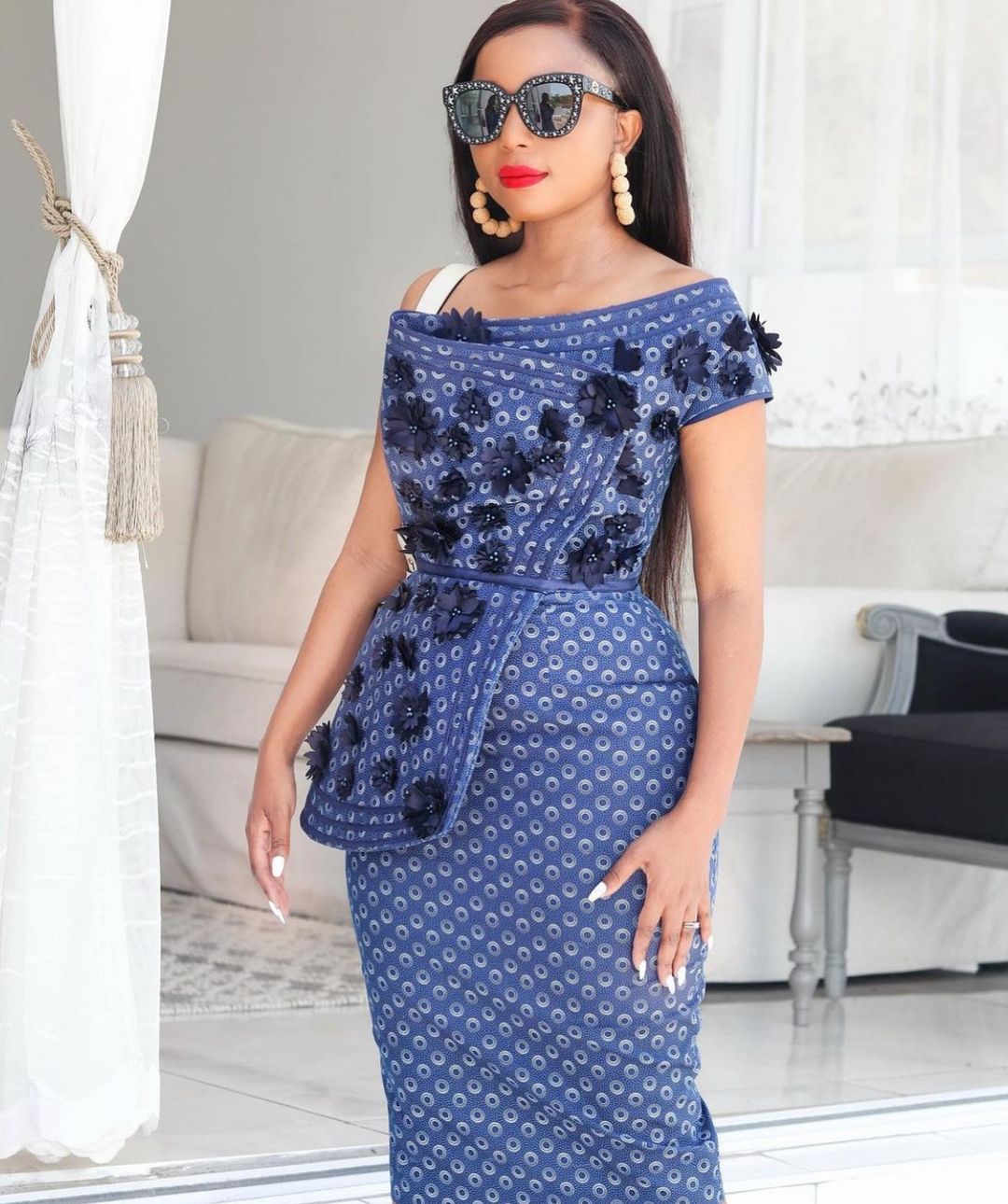GORGEOUS STYLES OF TSWANA TRADITIONAL ATTIRES FOR WEDDING
The Tswana people, one of the largest ethnic groups in Southern Africa, celebrate their weddings with a series of traditional customs and rituals that are deeply rooted in their culture and heritage. While these customs may vary slightly among different Tswana communities, the following is a general overview of how the Tswana celebrate their weddings:
Lobola Negotiations: Lobola, also known as bride price or dowry, is a crucial part of Tswana wedding traditions. Before the wedding, the groom’s family negotiates with the bride’s family to determine the number of cattle or other gifts that the groom must provide to the bride’s family. This negotiation is a symbol of respect and appreciation for the bride’s family and is meant to create a bond between the two families.
Betrothal Ceremony: Once the lobola negotiations are complete and the gifts have been exchanged, a formal betrothal ceremony is held. This ceremony involves the exchange of gifts and often a formal agreement of marriage between the families. It is a significant step in the wedding process.
Pre-Wedding Rituals: Before the wedding day, there are several rituals and ceremonies that may take place. These include rituals to cleanse and purify the bride and groom, ensuring that they are spiritually prepared for marriage.
Wedding Attire: On the wedding day, the bride and groom wear traditional Tswana wedding attire. The bride typically dons a vibrant Tswana wedding dress, often with intricate beadwork and accessories, while the groom wears traditional clothing that may include a shirt, pants, and a headpiece.
Wedding Ceremony: The actual wedding ceremony often takes place in the presence of a tribal leader, a religious leader, or both. During the ceremony, the bride and groom make vows to each other, exchange rings if they choose to, and perform various rituals that symbolize their commitment and the joining of their families.
Libation and Ancestral Honoring: In Tswana culture, it is common to pour a libation as a way to honor and seek blessings from the ancestors. The libation involves pouring a liquid, such as water or traditional beer, onto the ground as a symbolic offering.
Reception and Feast: Following the wedding ceremony, a festive reception is held where family and guests celebrate the union. Traditional Tswana music, dance, and song are often a central part of the celebration. A feast of traditional Tswana dishes, such as seswaa (pounded meat), morogo (cooked greens), and bogobe (porridge), is served to the guests.
Gift-Giving: Guests often bring gifts for the newlyweds, which may include blankets, pots, and other household items that the couple will need to start their life together.
Dancing and Festivities: Music and dance play a significant role in Tswana wedding celebrations. Traditional songs and dances are performed, and guests join in the festivities to celebrate the couple’s new life together.
The Bridal Send-Off: The day after the wedding, the bride is traditionally sent off to her new home with her husband. This is a significant moment, marked by singing and dancing as the bride departs with her husband.
Tswana wedding celebrations are a vibrant and culturally rich experience that emphasizes the importance of family and community. These customs and rituals help create strong bonds between families and ensure that the couple’s union is celebrated with reverence and joy.
What is Tswana Wedding Attire
Tswana wedding attire is a reflection of the rich cultural heritage of the Tswana people, one of the largest ethnic groups in Southern Africa. The attire worn by both the bride and groom during a Tswana wedding is characterized by vibrant colors, intricate beadwork, and symbolic designs. Here’s a breakdown of Tswana wedding attire for both the bride and groom:
Bride’s Attire:
Tswana Wedding Dress: The centerpiece of the bride’s attire is her traditional Tswana wedding dress. These dresses are known for their striking colors and patterns. They are often made from vibrant, colorful fabrics, with shades of red, blue, yellow, and other bold colors being popular choices. The specific design and color of the dress may vary based on the bride’s preferences, the region, and the designer.
Beadwork and Embellishments: Tswana wedding dresses are often adorned with intricate beadwork and embellishments. Beads, often in white or bright colors, are used to create decorative patterns, which may have specific cultural or symbolic meanings. These beadwork patterns are applied to the dress, headpiece, and other accessories.
Headpiece: The bride typically wears a headpiece, which can take various forms. It may be a beaded crown, headband, or even a fabric headwrap. The headpiece complements the dress and is often decorated with beads, shells, and other adornments.
Accessories: Tswana brides wear a variety of accessories to complete their wedding attire. These may include beaded necklaces, bracelets, and anklets. Each piece of jewelry may hold cultural significance or be a family heirloom.
Blanket or Shawl: In some regions, the bride may wear a traditional Tswana blanket or shawl, often draped over her shoulders. These blankets feature distinctive designs and are a symbol of her transition into marriage.
Groom’s Attire:
Traditional Tswana Shirt and Pants: The groom’s attire consists of a traditional Tswana shirt, often made from brightly colored fabric, and matching pants. These outfits can be tailored to fit the groom’s style and preferences. The choice of fabric and design may vary.
Headpiece: The groom typically wears a headpiece or headband, which may be adorned with beads or other decorative elements. The headpiece adds a traditional touch to his attire.
Accessories: Accessories are important for the groom as well. He may wear beaded necklaces, bracelets, and anklets. The type and number of accessories may depend on personal preference and cultural customs.
Blanket or Cloak: In some regions, the groom may also wear a Tswana blanket or cloak over his shoulders. These blankets often have distinctive patterns and hold cultural significance.
Walking Stick: A walking stick or staff is a common accessory for the groom. It is not only a symbol of authority and maturity but also an essential part of Tswana tradition.
Tswana wedding attire is a blend of tradition and contemporary style, and it reflects the cultural richness and diversity of the Tswana people. The attire is carefully selected, often customized, and holds deep cultural significance, making it a symbol of the couple’s heritage and commitment to each other.
The Essence of Tswana Traditional Wedding Dresses
Tswana traditional wedding dresses hold a significant place in the hearts of the Tswana people. These dresses are more than just garments; they are a manifestation of the cultural and familial ties that bind the bride and groom. Here are some key elements that make Tswana traditional wedding dresses distinct:
Vibrant Fabrics: Tswana wedding dresses are crafted from vibrant, colorful fabrics that represent the celebratory nature of the occasion. The use of bold, contrasting colors like red, blue, and yellow, often paired with intricate patterns and beadwork, adds an eye-catching element to these dresses.
Cultural Significance: Each element of a Tswana wedding dress has cultural symbolism. The colors, patterns, and beadwork carry specific meanings and are chosen with great care. This attention to detail connects the bride and groom to their heritage and ancestors.
Unique Silhouettes: Tswana wedding dresses typically consist of a long skirt and a matching blouse or top. The skirt can be flared or straight, and the blouse is often adorned with traditional patterns and designs. Beadwork and embellishments further enhance the overall look.
Accessories: Tswana brides often wear a headpiece or crown made of beads, leather, or fabric. These accessories are carefully chosen to complement the dress and highlight the bride’s beauty. Additionally, beaded necklaces, bracelets, and anklets complete the bridal ensemble.
Multifunctional Designs: One fascinating aspect of Tswana wedding dresses is their versatility. These dresses can be worn on various occasions beyond the wedding day, making them not only a symbol of the wedding but a valuable part of a bride’s wardrobe.
